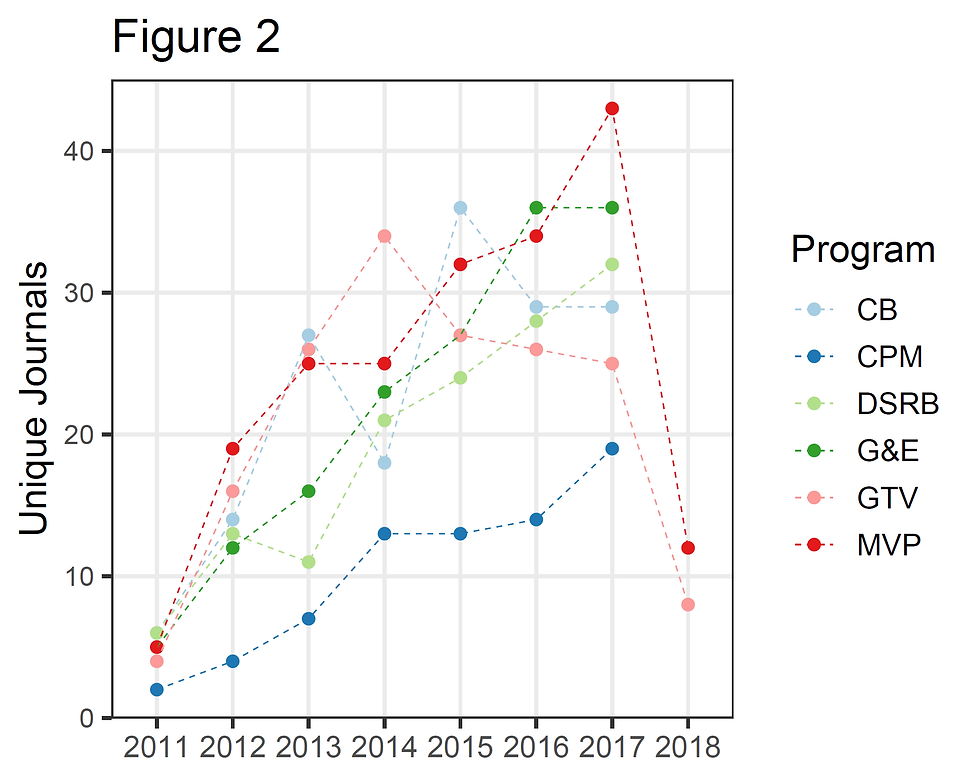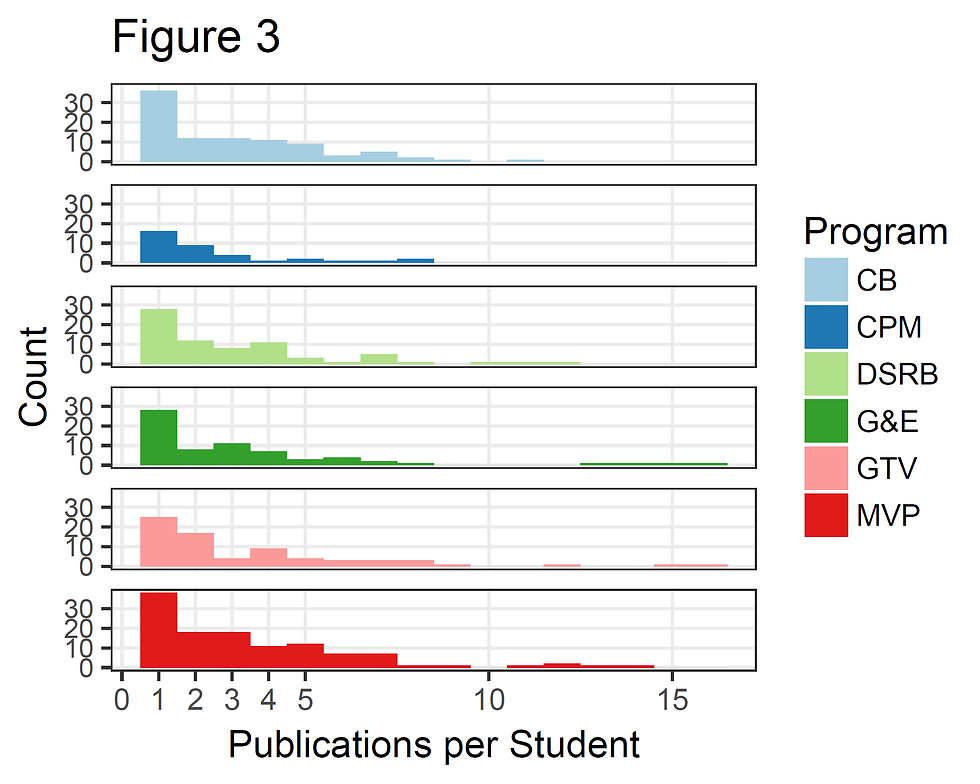Disseminating Your Dissertation: CAMB Student Publications
- Arwa Abbas
- Aug 25, 2018
- 3 min read
After spending months or years designing, performing and polishing a research project, it seems unjust to distill it down to a few thousand word report describing a limited set of data visualizations. However, the ability to honestly and succinctly do so is a crucial skill for life science researchers. Additionally, in an era where there is a glut in the global supply of doctorates [1], how does one assess the quality of individuals earning that prestigious-sounding degree? Thus, it’s no surprise that the University of Pennsylvania’s Cellular and Molecular Biology (CAMB) graduate group stipulates that a doctoral candidate have a certain number of publications prior to submitting their thesis. Specifically, the CAMB handbook describes that, “At least one lead-author peer-reviewed research publication should be in press prior to the granting of permission to write and defend the thesis” [2]. Publications are a key currency to enter many post-graduate career fields, especially academia, and reporting their findings in peer-reviewed journals is how scientists interface with each other and the general public.
CAMB students publish frequently and broadly. We examined publication trends derived from 1,171 publications in the MEDLINE database from 458 former and current CAMB students between 2011 and 2017. Overall, unique publications have increased (Fig. 1) during this six year period, with the greatest total number of publications (293) from the Microbiology, Virology and Parasitology (MVP) sub-group. In line with the fact that the total number of scholarly, peer-reviewed English language journals increases by 2.5% each year [3], researchers at Penn have also been presenting their work in increasingly varied journals (Fig. 2). While the median number of publications per student is two, 15% of students publish five or more papers, with the most prolific authors in the Genetics and Epigenetics (G&E) and Gene Therapy and Vaccines (GTV) sub-groups (Fig. 3).


Where students publish differs by sub-group. The most common journals are Cancer Research (Cancer Biology), Cell Metabolism (Cell Biology, Physiology and Metabolism), Cell Reports (Developmental, Stem Cell and Regenerative Biology), American Journal of Human Genetics (G&E), Blood (GTV), and Journal of Immunology (MVP). All sub-groups frequently publish in PLoS One, which is the oldest multidisciplinary open access journal. In contrast, Nature and Cell are in the top ten most common journals for only 3 sub-groups (DSRB, G&E, and CPM).
The CAMB program prides itself on collaboration, and this is reflected in student publication records. More than 20% of all publications have more than one CAMB student listed as authors, although collaborations between students from different sub-groups are uncommon. Some notable exceptions are “Mitotic transcription and waves of gene reactivation during mitotic exit”, published in Science in 2017 by Kate Palozola (G&E), Justin Becker (CB), and Allison Cote (CPM) and “Functions of BET proteins in erythroid gene expression” published in Blood in 2015 by Sarah Hsu (CB), Stephan Kadauke (GTV) and Amy Campbell (G&E) .

Keeping track of publication records is undoubtedly a challenge since some work performed by a student may not be published until after they’ve left the University, and because students may publish under different names, which may be missed in automated database searches. Penn libraries recently purchased an institutional license for the ORCID system, and students are encouraged to create and share ORCID accounts with the Biomedical Graduate Studies office to facilitate tracking their achievements. Student publication data is a key in evaluating the strengths and areas of improvement of graduate programs, and for securing funding from national and external sources. As the publication landscape shifts, graduate students and their mentors will undoubted tailor their choice of submission venue to maximize impact and minimize publishing lag times. Of course, the PhD experience is certainly not just the sum of one’s papers, but reviewing this common metric of productivity demonstrates that CAMB students are making broad and deep impacts in the scientific community.
Cyranoski, D., Gilbert, N., Ledford, H., Nayar, A., & Yahia, M. (2011). Education: The PhD factory., 472(7343), 276–9. doi:10.1038/472276a
https://www.med.upenn.edu/camb/dissertation.shtml#permission
Ware, M., & Mabe, M. (2015). The STM report: An overview of scientific and scholarly journal publishing.

Thanks for sharing such a informatic blog Are you a student and if you struggling with any assignment solution then My Assignment Services is the best if you are searching for PhD dissertation writing help. They offer assignment writing services at student-friendly prices at 40% off. Moreover, they ensure on-time delivery, deliver plagiarism-free assignments, conduct 1-on-1 sessions with assignment experts, and have a money-back policy.